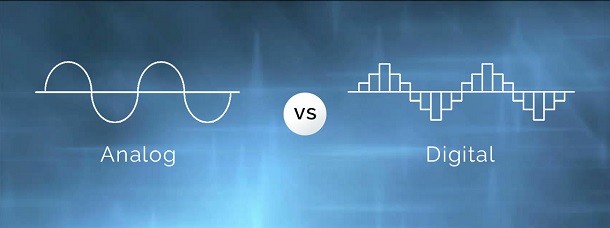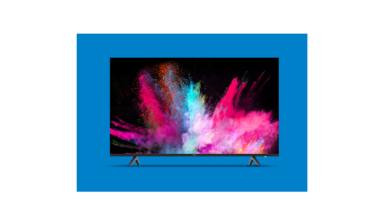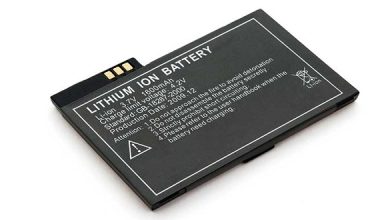Analog vs. Digital Design vs. Analog and Mixed-Signal (AMS) Design: Understanding the Differences and When to Use Each

The world of electronics is characterized by many design approaches intended for different uses and needs. Two of the oldest, analog and digital design in vlsi, have lately been supplemented by a new direction, which is the so-called Analog and Mixed-Signal design. For an engineer or a hobbyist, it is essential to be aware of the differences between these design techniques to know what tools are most suitable for a particular project.
Analog design
Analog design refers to the field of electronics that handles continuous signals, which assume any number of values within a given range. These signals are primarily utilized to represent measurable physical quantities like temperature, pressure, sound, or light. Analog design finds application in fields that handle real-world signals including audio and video equipment, sensors, and control systems. This is because analog signals are susceptible to noise, distortion, and other forms of imperfections which makes it necessary for design engineers to apply caution when working with them. In contrast, vlsi physical design in usa focuses on digital circuits and signals.
Digital design
Digital design, as opposed to analog design, operates on discrete digital signals, which allow only a limited number of discrete values that can only be defined using 0s and 1s. The main purpose of digital signals is to handle data, transmit and process commands, and any other type of digital information. It is a widely used concept in the production of electronic components, such as computers, microprocessors, various electro-device communication, and many other electronic devices. They are not prone to noise and distortion, which is why digital signals are more robust, and thus it is much easier to manipulate them to send information over long distances.
Analog and mixed-signal (AMS) design
Analog and Mixed-Signal design is an area that combines the concepts and principles of analog design and digital design. When analog and digital signals are combined on a similar chip or system, the user is enabled to operate with both continuous and discrete information. Analog signals are frequently transduced from the true world to digital so they can be analyzed, while digital signals are again transduced to the analog form for control and output applications. Some of its design aspects are wireless communication, audio, and video codecs, sensor interfaces, power management, etc.
When to use analog design
Analog design is typically used in situations where real-world signals need to be processed, such as:
Audio and video equipment: The analog design is still frequently used in devices processing audio and video, like amplifiers, mixers, and signal processors, where the preserved authenticity of an initial signal is required.
Sensors and transducers: This covers a variety of devices to measure physical quantities like temperature, pressure, and light. The analog design allows accurately capturing the signals and processing them further.
Control systems: Most of the control systems used in industrial automation, robotics, and other fields, require an analog design to enable accurate measurement and control over a broad set of physical processes.
When to use digital design
Digital design is the go-to approach when dealing with data processing, computation, and digital communication, such as:
Computers and microprocessors: Modern computers and microprocessors are based on digital form, which leads to complex computations, data manipulation, and instruction execution.
Digital communication systems: Digital communication of mobile networking, internet protocols, and wireless technologies, as well as the basic concepts of coding, transmission, and decoding the digital data.
Digital signal processing: DSP involves its algorithms and systems that are used in applications like audio and video compression filters and analysis and implemented employing digital design.
When to use analog and mixed-signal (AMS) design
AMS design is essential when a system needs to interface between the analog and digital domains, such as:
Wireless Communication Systems: Implementation of AMS design in wireless communication systems is used during the conversion of relatively weak analog radio frequency signals into digital data for further processing, and the correlated reverse conversion of digital data into analyzed signals.
Audio and Video Codecs: Among multimedia audio and video applications, the codecs include consistent AMS design, which is used to convert relatively weak analog signals into digital form for signal compression and subsequent transmission, and then through reverse conversion into analgesic signals form to playback.
Sensor Interfaces: Signal design while utilizing modern sensor systems almost always involves the conversion of weak analog sensor data signals into digital form for storage and further analysis, while concurrently maintaining digital control of some sensor parameter.
Power Management Circuits: In many cases, power management circuits of electronic devices based on digital integrated circuits like microcontrollers also reprimand the usage of AMS signal design to control and regulate interaction with analog power sources.
Choosing the right design approach
There are different factors one can consider in selecting the best design approach such as application requirements, signal characteristics, and system constraints. However, below are the general guidelines to consider:
Analog Design: This is the best approach when the system wishes to process real-world signals directly such as audio, video, or sensor data. It may also be the best approach when processing quantities related to physical processes requiring accurate control or monitoring.
Digital Design: This is the best design approach if one is working on data processing, computation, and digital communication. Digital Design is also easy to communicate, convert, and manipulate data, and the degree is immune to noise, which makes it reliable.
Analog and Mixed-Signal: When the system requires an approach that crosses the lines between analog and digital domains, the best approach is analog and mixed-signal just like in the wireless communication system of audio and video coding. It may also be the best approach when working on sensor interfaces and Power Management circuits.
Conclusion
Keeping in mind the progressing development of the electronic world, one should differentiate between analog and digital and analog design and mixed signal. The first is the best in processing real-world signals, and the second processes data and calculations perfectly. AMS is the way to combine both of them, the one to make it possible to use all the systems in just one design. Therefore, the choice of design is dependent on many factors, such as the system requirement of the application, the signal properties, and the system constraints. Understanding and knowing the advantages of the system design in the particular combinations mentioned above will help engineers and tech fans choose more effective and efficient designs for the systems. This is also important for a semiconductor testing company to ensure proper verification and validation of the designed systems.





